How to add Bluetooth to your computer with a TP-Link WLAN Bluetooth adapter
Archer T5E , Archer TX3000E
Recent updates may have expanded access to feature(s) discussed in this FAQ. Visit your product's support page, select the correct hardware version for your device, and check either the Datasheet or the firmware section for the latest improvements added to your product. Please note that product availability varies by region, and certain models may not be available in your region.
User’s Application Scenario
I want to connect Bluetooth headphones, or send / receive files via Bluetooth, yet my computer does not support Bluetooth function.
How can I do that?
Add a TP-Link WLAN Bluetooth adapter to your computer to get Bluetooth. For details, follow the steps below.
Here takes Archer TX3000E (UN) 1.0 as a demonstration.
Step 1. Connect the adapter to your computer
1. Turn off your computer, unplug the power cable then remove the case panel.
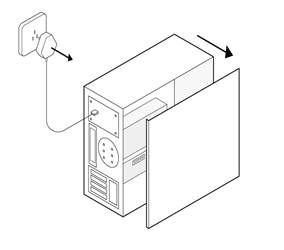
2. Connect the provided Bluetooth USB cable to the adapter.
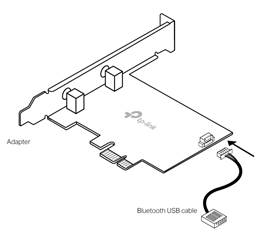
3. Locate an available PCIE X1 slot and carefully insert the adapter.
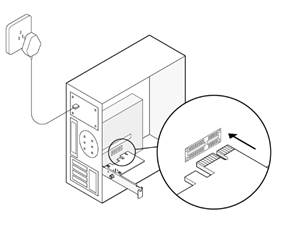
Note: If the bracket is not suitable for your computer, detach it from the adapter’s board and replace it with the low-profile bracket.
4. Locate an available F_USB connector and carefully plug the Bluetooth USB cable into it.
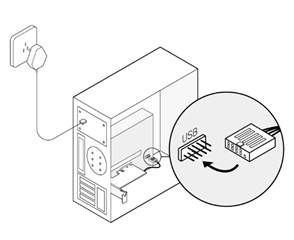
Note: If the Bluetooth USB cable is not correctly connected to the motherboard, Bluetooth function won’t work even after driver installation.
5. Replace the case panel, plug in the power cable and turn on your computer.
Step 2. Install Bluetooth driver
Note: The following steps take Windows 10 (64-bit) as an example. The actual interface images may vary by model and software version.
1. Insert the CD and run the Autorun.exe.
Note: You can also check the new release and download the driver at https://www.tp-link.com/support/download/
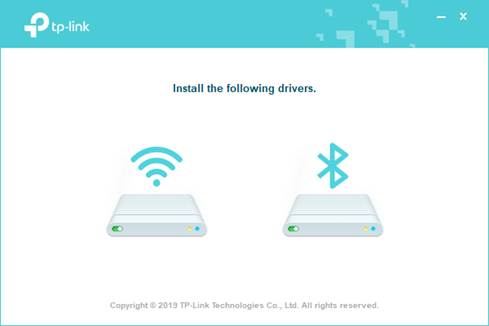
2. Click  to start Bluetooth driver installation, then follow the on-screen instructions to finish it.
to start Bluetooth driver installation, then follow the on-screen instructions to finish it.
Note: DO NOT install the Bluetooth and Wi-Fi drivers simultaneously. If Wi-Fi driver is being installed, please wait until it is finished, then try installing the Bluetooth driver again.
3. To check if your Bluetooth driver is well installed, refer to How to check if I have installed the driver for my adapter successfully or not on windows. Alternatively, check if the Bluetooth icon is displayed in the menu bar.
Step 3. Pair with your Bluetooth device
1. Turn on your Bluetooth device and make it discoverable.
2. After the Bluetooth driver installation, you will find a Bluetooth icon displayed in the menu bar. Right click it and select Add a Bluetooth Device or Add a Device to scan for available devices.
Note: You can also go to Start >Settings >Devices > Bluetooth & other devices to access Bluetooth settings on your Windows 10.
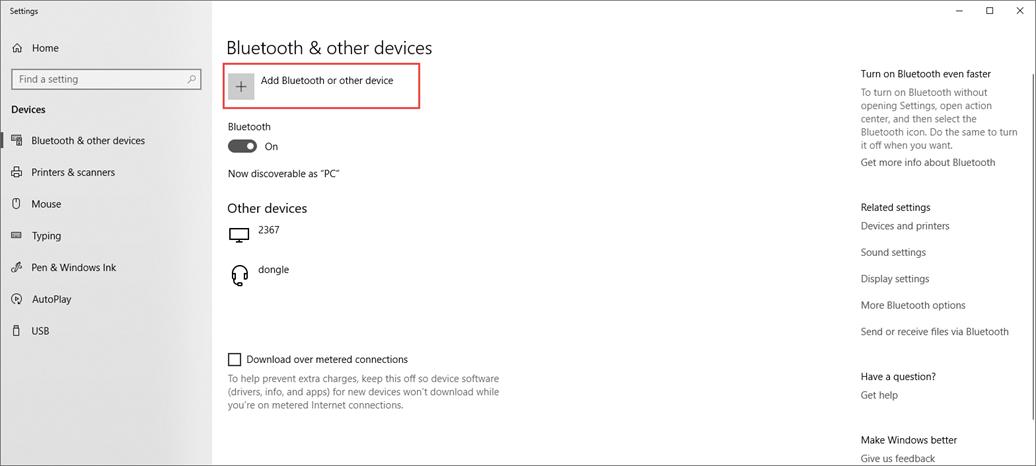
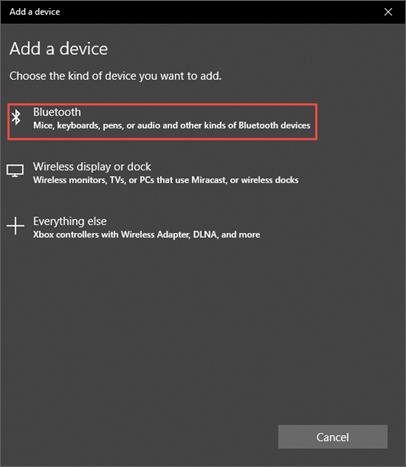
3. Select your Bluetooth device from the scanned list and follow additional instructions to complete pairing.

Step 4. Send or receive files via Bluetooth
1. Select Send or receive files via Bluetooth in your computer’s Bluetooth settings.
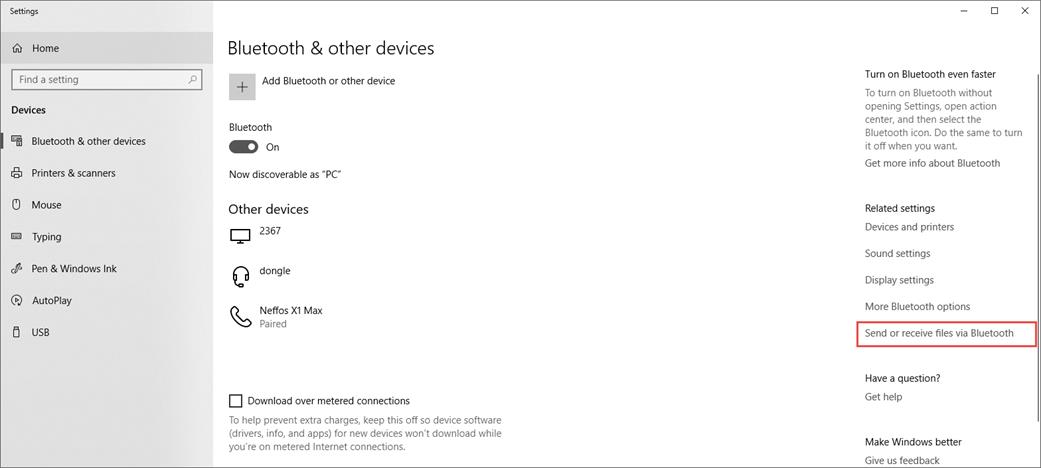
2. Select if you would like to send or receive files to continue. Then follow the on-screen instructions to transmit files.
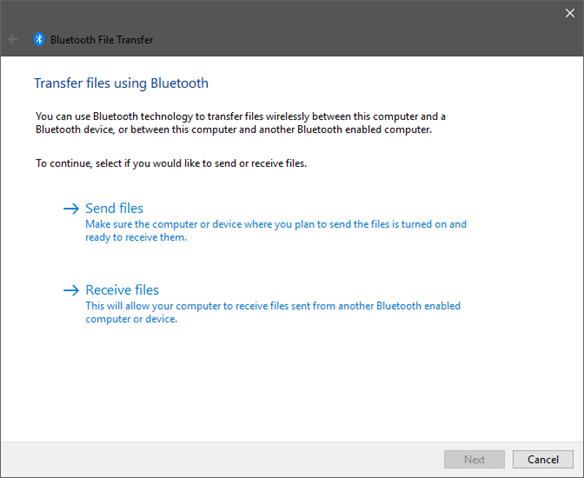
Get to know more details of each function and configuration please go to Download Center to download the manual of your product.
Esta FAQ é útil?
Seu feedback ajuda a melhorar este site.
Qual é a sua preocupação com este artigo?
- Insatisfeito com o produto
- Muito complicado
- Título confuso
- Não se aplica a mim
- Muito vago
- Outros
Obrigado, senhor
Agradecemos o seu feedback.
Clique aqui para contatar nosso Suporte Técnico.
Produtos recomendados
Este site usa cookies. Ao continuar a navegar no site, você concorda com o uso de cookies. Não mostrar novamente Saiba mais .
Este site usa cookies. Ao continuar a navegar no site, você concorda com o uso de cookies. Não mostrar novamente Saiba mais .
Cookies básicos
Esses cookies são necessários para o funcionamento do site e não podem ser desativados em seus sistemas.
TP-Link
accepted_local_switcher, tp_privacy_base, tp_privacy_marketing, tp_smb-select-product_scence, tp_smb-select-product_scenceSimple, tp_smb-select-product_userChoice, tp_smb-select-product_userChoiceSimple, tp_smb-select-product_userInfo, tp_smb-select-product_userInfoSimple, tp_top-banner, tp_popup-bottom, tp_popup-center, tp_popup-right-middle, tp_popup-right-bottom, tp_productCategoryType
Livechat
__livechat, __lc2_cid, __lc2_cst, __lc_cid, __lc_cst, CASID
Youtube
id, VISITOR_INFO1_LIVE, LOGIN_INFO, SIDCC, SAPISID, APISID, SSID, SID, YSC, __Secure-1PSID, __Secure-1PAPISID, __Secure-1PSIDCC, __Secure-3PSID, __Secure-3PAPISID, __Secure-3PSIDCC, 1P_JAR, AEC, NID, OTZ
Cookies de Marketing e Análise
Os cookies de análise nos permitem analisar suas atividades em nosso site para melhorar e adaptar a funcionalidade do mesmo.
Os cookies de marketing podem ser definidos por meio de nosso site por nossos parceiros publicitários para criar um perfil de seus interesses e exibir anúncios relevantes em outros sites.
Google Analytics & Google Tag Manager
_gid, _ga_<container-id>, _ga, _gat_gtag_<container-id>
Google Ads & DoubleClick
test_cookie, _gcl_au
Meta Pixel
_fbp
Crazy Egg
cebsp_, _ce.s, _ce.clock_data, _ce.clock_event, cebs
lidc, AnalyticsSyncHistory, UserMatchHistory, bcookie, li_sugr, ln_or
TikTok
_ttp
